#leftlion
Text








x
0 notes
Text
Quite an old interview with Noel that I happened to stumble across while looking for something else - from the gap between seasons 2 & 3 of the Boosh.
Wait, did I forget to add the link?! WAAAAUAUGGHHHH!
10 notes
·
View notes
Text
'In All of Us Strangers two men, Adam (Andrew Scott) and Harry (Paul Mescal), live seemingly isolated lives in the same newly built flats – until Harry arrives at Adam’s door, promising “I'll keep the vampires from your door”. Through the relationship that develops between them, and as Frankie Goes to Hollywood warbles at the film’s opening, we see the power of love and its ability to save us. But to paint this film simply with the brush of ‘romance’ would be to obscure the similarly profound power of parental love, and the agony of bereavement that the film also explores.
“I’ve drifted… almost to the edge”, says Harry, as he describes his position as an outsider on the periphery of his family. His movements seem to mirror this painful admission: Harry's arms stretch out so that they hang suspended over the edge of the bed that he and Adam lie in. This feeling of being suspended on the edge is a current that runs through the film and takes different forms.
Through well-written and subtle dialogue, the film shows how sometimes being queer is about being stranded on the edge, pushed there by a heteronormative and homophobic society. An example of this subtly is when Adam and Harry – 20 years apart in age – discuss the different terms ‘queer’ and ‘gay’. For Adam, the word queer is an insult and an allusion to strangeness. Whereas for Harry, in his early twenties, ‘queer’ is an empowering term while ‘gay’ is a weapon in the arsenal of schoolyard bullying.
The semantics may have changed, but the feeling of being on the outside remains the same. Adam understands Harry’s feeling of isolation, “It doesn’t take much”, he replies moments later, “To be back there again, skin all raw”. A sense of solace through their shared loneliness soon morphs into something much more as they fall in love.
Scott and Mescal are superbly cast. Scott’s careful charm and powerful acting give us access to Adam's inner complexity that might perhaps be lost with someone less skilful. Joining him is Mescal as a northern Harry, open and understanding: somewhere safe for Adam.
But their relationship is merely part of the film because running concurrently to this is Adam’s deep and heavy bereavement. It is in this grief that the film’s sense of the surreal comes into focus: to help his writer's block whilst he writes about his parents, Adam decides to visit his childhood home. Here he finds his long-deceased parents, immortalized in the 1980s, the time that they died.
A fascinating dynamic is created because Harry is no longer the 12-year-old boy they knew, but rather a grown man in his 40s. They are at once intimately familiar and like strangers. But through their reconnection, they develop a different kind of bond based on a mature kind of love. Although figments of his imagination, these visits visibly heal a part of Adam damaged by his lifelong grief.
But what begins as an innocent desire for connection to his parents, shifts and becomes a source of unnerving delusion. Adam takes Harry by train to see his parents who Harry knows to be dead. Until this moment, the audience and Adam are in collusion; the visits to his parents feel like a secret – safe in their privacy. However, here, having brought Harry into his delusion, the audience loses their trust in Adam to distinguish between the truth and his fantasies. Like the way a reflection in the glass sometimes shows us the thing itself more clearly, Harry's reaction exposes Adam’s delusions for what they are. The audience are themselves now placed on the edge unsure of what is fact and what is fiction.
Yet, in the film's final moments what is real and what is not doesn't matter, because Adam's experience with grief and love is true. Although he briefly loses reality, he gains real experience with his parents and with Harry. Not healed by the end but graced with a form of closure through his fantasies, Adam can begin to move forward. Equipped perhaps with the knowledge that the vampires at his door are less like monsters and more like men hoping to be allowed in.'
0 notes
Text
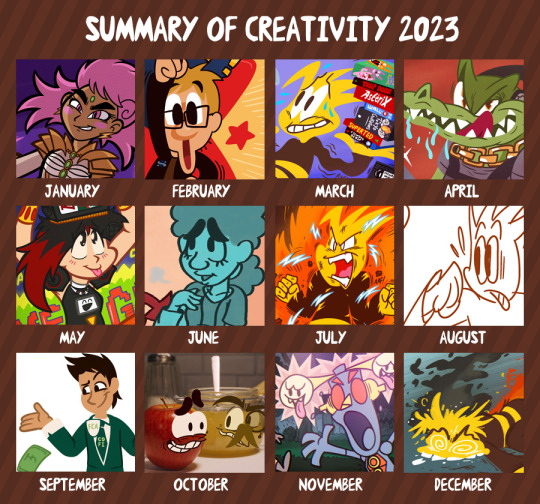
Another 12 months of animatin', illustratin' and video creatin' in the can! This was another pretty stacked year for freelance work and building up my YouTube channel. Read on for more details on each month!
January:
The year kicked off with the release of What a Waste, which I animated at the end of last year. I created a poster to celebrate it's launch.
I also had some artwork in print via an article in LeftLion magazine!
I also illustrated my OC Drillbot ReV for the year of the rabbit and put out a new animation showreel.
February:
I did a valentines card for CherryT of the pair of us in Mario & Luigi style. I was also commissioned to do an edit of the van animation I did last year, this time with a car and some other minor tweaks.
March:

At the start of this month I hit over 1000 subscribers on YouTube, only took 17 years! To celebrate I put together a quick video talking about the past, present and future of the channel, using it as a test to see how I could start making more fully-edited, scripted videos using my PNGTuber.
The first of these was an almost hour long video exploring my DVD/Blu-Ray collection.
April:
This was the month that I really pushed to get a load different videos out on my channel, with full illustrated thumbnails for each! This mostly consisted of a six-part let's play of the Murder of Sonic the Hedgehog, cut down from an April fools day livestream.
I also did an impressions video about the Super Mario Bros movie and a scripted video about Easter eggs I snuck into my animations, just in time for Easter! I also made a speedpaint video for one of the video thumbnails and made a new logo for the speedpaint videos.
There was also a birthday card illustration for CherryT inspired by the Mario movie!
May:
May was a pretty quiet month, mainly consisting of two illustrations: a quick one of an OC for mermay and a piece of fan art of vTuber Asha the Game Genie. Both of these were captured off-stream and turned into speedpaint videos.
I also made a supercut of a Netherlands travel vlog from 2018 with a bunch of additional footage that I never got around to editing before, in time for the 5th anniversary of our friends wedding that we attended that year!
June:
My first big freelance project finally arrived between May and June, an informational film about Credit Unions, done in a similar style to several films I did last year, but with more colour in the mix.
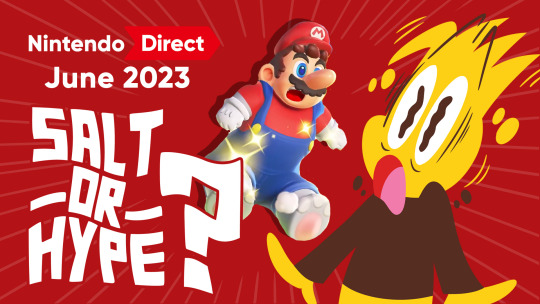
I also did a couple of livestreams this month, namely a reaction stream to a Nintendo Direct and a Sonic anniversary stream, a part of which was edited into a video of me drawing obscure Sonic characters from memory.
July:
With that freelance project done and dusted I dedicated most of this month to some personal animating stuff: mainly giving my PNGTuber a fresh coat of paint by improving all the animations with more frames. I made a scripted video about the process.
I also made big progress on a re-animated collab shot that I finally finished in November.
August:
Browsing my pages you'd think I did absolutely nothing this month, but I was in fact deep in researching for a video series I plan to make for YouTube in the near future when I have more spare time for it. What started as a single short video idea deep-dived into a rabbit hole of fascinating stuff that I can't wait to share with you all!
I also started animating an intro for this video series, which is currently sitting in sketch form and will be returned to next year when I can!
September:
My YouTube planning had to be stuck on hold as another big freelance project landed on my lap: an informational film about community lenders. There is some pretty fun scenes in this, and yet another loan shark character! This took up all of September and was released at the end of October.
October:
Just as I wrapped up the previous project another even bigger one was being cooked up: a sequel to What a Waste! Once the filming of the puppetry and the recording of the voice talent was ready I could get to work on once again animating faces for the returning apple character and the five new characters!
What a Waste was a pretty experimental film but this time around I had a working system in place to jump straight in and assumed I would be able to get this one done in less time. I technically did get it done in less time because the deadline for it was much tighter, but it was a crunch to do so, consisting in total of over 2000 assets!
In the short space between these projects I illustrated Rouge the Bat based on a Twitter trend.
November:
November was mostly taken up by wrapping up production on Apple-y Ever After. In total it took about five weeks, about a week longer than I planned, not helped by me choking on a slice of potato that rendered shallowing anything difficult for weeks! It was a good thing CherryT was around at the time to perform a Heimlich maneuver on me! Absolute life saver!
A teaser trailer was released mid way through the month.
Once that was done with I went back and finally finished this shot for the Wario Ware GOLD re-Animated collab that I had been chipping away at on-and-off for around three years! It's done pretty nicely on both Newgrounds and YouTube. The full collab should be out sometime next year! Speaking of which, I have another shot reserved that I need to crack on with when I'm less busy with freelance work!
December:
I've started another big animation project that will run until the end of January and hopefully be released in Feb. This was the third project in a row with hardly a break in between and that, on top of the film work, left me feeling pretty burnt out, hence this quick doodle.
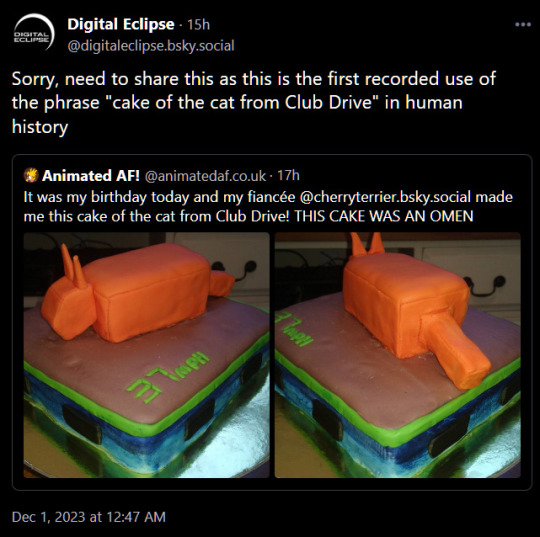
Digital Eclipse summed up the birthday cake CherryT made for me best!
I spent the spare time I had at the start of the month to make a video about the latest birthday cake CherryT made me. I also took this opportunity to edit remasters of previous cake videos, including one that was never finished. Here's the playlist for all six of them.
Apple-y Ever After finally released near Xmas, which meant I could publish this poster I made for it. Next month there will be a making of video published by Deadline and so far the film has been quite the hit, currently sitting at around 40K views!
Finally, I published an old Xmas animation from 2010 on YouTube, but because the original video had copyrighted music baked into the sound effects, I remade the soundtrack from scratch!
Previous years: 2022 - 2021 - 2020 - 2019
2018 - 2017 - 2016
0 notes
Text
Exhibitions
2021 Group Exhibition, Analog – An Exhibition of Contemporary Collage, Tarpey Gallery, Castle Donnington, UK
2021 Open Exhibition, International Postcard Show, Surface Gallery, Nottingham, UK
2020 Solo Exhibition, CollAge (a collaboration with University of Nottingham School of Veterinary Medicine), Hockley Arts Club, Nottingham, UK
2020 Open Exhibition, HOME Open 2020, HOME, Manchester, UK
2019 Collaborative Project, Culture Cure Late, Museum of Science and Industry (MSI), Manchester, UK
2019 Group Exhibition, Aintree University Hospital, Liverpool, UK
2018 Group Exhibition, Manchester School of Art Master’s Show, Manchester, UK
2018 Collaborative Project, Absolute Beginners, King’s Arms, Manchester, UK
2018 Collaborative Exhibition, Cluster Collective, OA Studios, Manchester, UK
2018 Collaborative Project, Soapbox Science, Gravity Fields Festival, Grantham, UK
2018 Solo Exhibition, Unfashioned Creatures, Wigan STEAM, Wigan, UK
2018 Residency, Natus residency progamme, Wigan STEAM, Wigan, UK
2018 Collaborative Project, Soapbox Science, Bluedot festival, Macclesfield, UK
2018 Group Exhibition, To Board a Plane, OA studios, Manchester, UK
2018 Group Exhibition, The Museum of Everyday Life, Manchester School of Art, Manchester, UK
2017 Collaborative Project, Get It Done, Goodstock, Manchester, UK
2016 Solo Exhibition, Just your average private view, Drs Orders, Nottingham, UK
2016 Collaborative Exhibition, Dizzy Ink Brexit project, Quad, Derby, UK
2016 Solo Exhibition, What a thing to say – and on my birthday! Pepper Opal Gallery, Brussels, Belgium, UK
2016 Group Exhibition, SHE UK, Tanner Street, London, UK
2015 Group Exhibition, Yours Comes Comitis, Firstsite, Colchester, UK
2015 Residency, Circuit / Organisational Change, Wysing Arts Centre, Cambridge, UK
2014 Group Exhibition, Five, Bohunk Institute, Nottingham, UK
Publications
Consilience Journal (2022), Field Notes, vol.1. ‘Perceptions’ issue, [online]
Here Comes Everyone (HCE) (2019), The Classified Issue, vol.9., issue 1., Coventry, UK
Planet Bee (2019), vol. 2, Manchester University, Manchester, UK
JAWS (Journal of Arts Writing by Students) (2019), Unfashioned creatures: A study of photo-collage and its relevance in the twenty-first century, Intellect Books, vol.5., issue 1., London, UK
Leftlion (2018), The first 100 covers, Leftlion Ltd, Nottingham, UK
Phox Pop Magazine (2018), Phox Pop - Art | Science | History, issue 5., UK
Siege Magazine (2018), Siege Magazine, vol.1, Manchester, UK
Leftlion (2018), Leftlion Magazine #99, March 2018, vol. 99, Nottingham, UK
Sober Magazine (2018), Issue One: Identity, SOBER., vol.1., [online]
Timmins, B. (2016) Gender neautral artist and bad taste curator: Keith Mary, XXY Magazine, 21 Nov 2016 [online]
Sweet’art (2016), SHE, Sweet’art, London, UK
Average Art Magazine (2016), Average Art 1, vol.1
0 notes
Photo
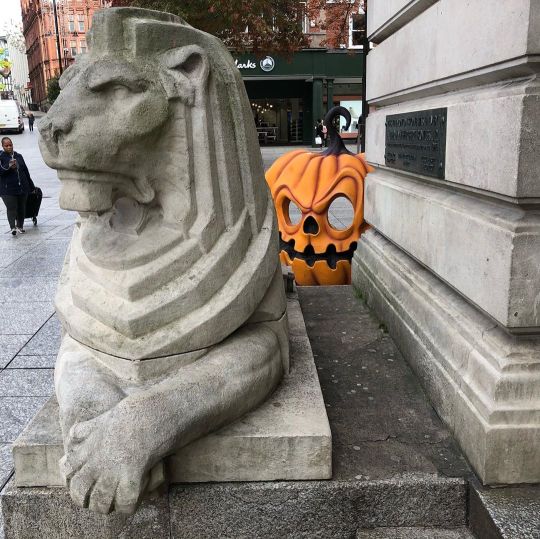
Left Lion being stalked by a scary pumpkin #leftlion #pumpkin #nottingham #halloween (at Old Market Square) https://www.instagram.com/p/B4KEUVhnLQGjITX1unnO3FAAZBCYWC4H8CaUsI0/?igshid=e1qipmjqa6c9
3 notes
·
View notes
Text
Guest blog by Martin Sommerville
Thank you so much for bringing the incredible carvings down to my workshop yesterday.
Still slightly reeling from having these extremely powerful pieces of art visit the studio.
Three soap carvings, from the archived collection at the national justice museum. Tiny talismanic creations, made by prisoner(s) unknown.
.
These are objects carrying deep stories, history and feeling heaped so thick the weight was visceral.
Art made in stolen moments, from stolen pieces of the of machinery of confinement, tiny incised scratches betraying the hand of the maker trying to break out of something, making a new sense of the scentless prison soap.
.
To me they speak to the human urge to process experience physically, whether we are handed the means and materials, or whether they are taken away. Things emerge in solitude, the elastic, elongated time spent inside, resonating with wartime bone carvings & sailors scrimshaw. Tools, artist, medium all flow into each other in a slow motion meditation, ingenuity born out of the drive toward survival, or its opposite. Another resonance: the soap being a way to clean things up, to wash away, scrub and scour... how many masterpieces we're sacrificed as suds down the drain?
.
So many more layers to feel, to put back together: it would be interesting to trace the pattern on the back of the fragments, find out when the soap was manufactured... Analyse the carving marks to see if the same person made each one... Were they developing a style, a story, which was the first?
.
None of that! Who ever made these was just passing time! Making their way! Trying. To. Get. By. Till. They. Get. Out.
.
So, in short, it was pretty moving meeting these things!
.
thank you Left Lion magazine for surprising me this morning, thanks Andrea Hadley-Johnson from National Justice Museum for sharing & @fabrice.gagos for taking pictures.
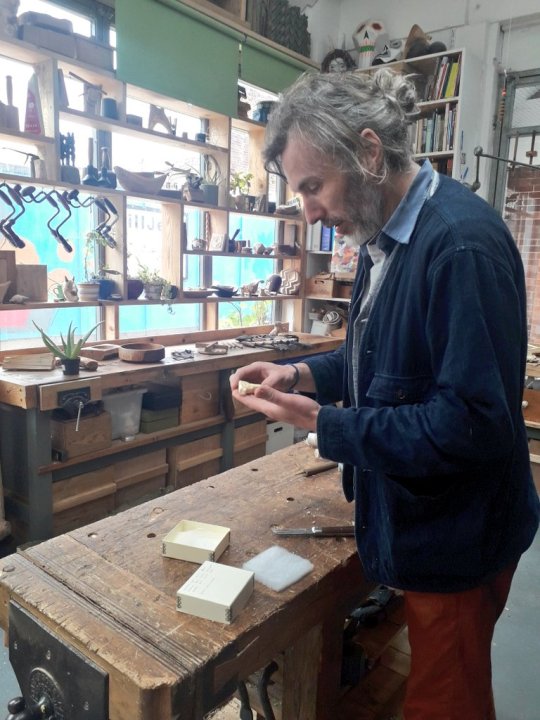
#soap#prison#creativity#scupt#portrait#art#artbrut#outsiderart#leftlion#nationaljusticemuseum#museum#objectwalks#collection#community#sharing#dialogue
1 note
·
View note
Text
One of the most talked-about plays in UK theatre right now; Mark Gatiss stars for audiences at Nottingham Playhouse and, later this month, across the world as part of National Theatre Live...

Theatre Review: The Madness of George III7 November 18words: Jared Wilson
https://youtu.be/CZEYgjhhQU0
When Adam Penford took over as the artistic director of Nottingham Playhouse a year back, there would have been a twinkle in his eye about this play. He’s done plenty of interviews over the last year about how he’s the prodigal son (yes, he’s actually from here) looking to put Nottingham theatre back on the map. If he carries on like this he might just end up building a new empire.
If you’re not already aware, The Madness of George III is a play penned by Alan Bennett as a fictionalised biographical study of the latter half of George III’s reign. He was the king who became famous for losing two things; his mind and the American colonies (due to the declaration of Independence). As well as various stage adaptations, there has also been a film; 1994’s The Madness of King George - apparently they removed the Roman numerals so that American audiences didn’t assume it was a sequel.
The title role is filled by Mark Gatiss (The League of Gentlemen, Sherlock, Dr Who etc) who is almost certainly one of the most accomplished actors in the country right now. He’s excellent, engaging and energetic throughout, and downright loveable in various states of lunacy. He is clearly comfortable working under the direction of Penford, having previously collaborated on 2016’s Boys In The Band for The Park Theatre in London. Fingers crossed this won't be the last time we see him at the Playhouse.The Madness of George III - Photo by Manuel HarlanThe cast also includes Olivier-winning Adrian Scarborough (Gavin and Stacey, The King’s Speech) as Dr Willis and Debra Gillett (Call The Midwife, Bridget Jones’ Baby) as the Queen. They too both shine and in most other productions either of them would steal the show, but this is definitely Gatiss’ night.
A play like this can seem fairly timeless, but it’s clear that interest in our monarchy hasn’t waned with the recent success of The Crown on Netflix and the tabloid frenzy of Harry and Meghan’s wedding. The set design by Robert Jones deserves a special mention. He’s created a series of simple, but slick revolving walls and furniture which looks both regal and theatrical, and enable transitions between scenes to be completed in just a few seconds each.
On Tuesday 20 November this play will be broadcast live to over 700 UK cinemas (and more worldwide) including Broadway, Savoy and Showcasevia National Theatre Live. This is a first for both the Playhouse and Nottingham. It’s a pleasure to see what is usually the exclusive property of the Southbank, step into the provinces for a change.The Madness of George III runs at Nottingham Playhouse until Saturday 24 November. Tickets are scarce!
#MG#mark gatiss#the madness of george iii#nottingham playhouse#leftlion#theatre review#the genius in action#all things MG
5 notes
·
View notes
Video
70 Years Later: In a Lonely Place
19 June 20
by Miriam Blakemore-Hoy
Seventy years after its release, we visit auteur Nicolas Ray’s fifties film noir murder mystery.
Director: Nicholas Ray
Starring: Humphrey Bogart, Gloria Grahame, Frank Lovejoy
Running time: 94 minutes
Dixon Steele (Humphrey Bogart) is a Hollywood scriptwriter chasing his own demons. He gets into fights in bars, on the street, with friends, with strangers. He’s a difficult customer and no one can quite pin him down. Needing help with a potential new project, he asks a young check-out girl at Paul’s restaurant to visit his apartment and read through a book he is supposed to be adapting. Everything seems above board and she soon leaves again for home, watched by Dix’s curious, sultry neighbour Laurel (Gloria Grahame). So when the young girl, Mildred, turns up murdered the next morning, suspicion falls on Dix as the last person to see her alive.
Based on the novel of the same name by Dorothy B. Hughes, the film takes us down a long and winding road into the darkness of a person’s soul. At the time it was made, it was an incredibly modern and ambitious project. Some of the filming techniques used, such as a POV shot from Dix’s perspective, or the shadowy lighting used to highlight a character’s eyes, still feel very fresh. The ending in particular is so shocking, that it truly deserves being listed as one of the 1001 films to see before you die. Dix Steele is a complex character, executed perfectly by Bogart. As the layers of his personality are gradually stripped away piece-by-piece, tensions rise. Unlike most film noir in that era, you can really see the ugliness side of his personality bubbling away underneath. It is a remarkable portrait that shows off Bogart’s full range and justifies the title of greatest male star of classic American cinema, given to him by the AFI.
I hope that these days, a woman like Laurel wouldn’t give Dix the time of day
However, I can’t let it pass without going into Dix Steele’s behaviour a little further. Watching it with a contemporary perspective, I found myself more uncomfortable than I think even Nicolas Ray meant me to be. Dix Steele might have been crafted to be one of the first sexy bad guys, but these days behaviour such as his leaves a bad taste in the mouth. As Dix and Laurel fall in love, she is subjected to an insidious form of domestic abuse that is hard to watch. Of course, part of the purpose of the film is to make the audience question whether or not Dix is capable of Mildred’s murder, with the “has he, or hasn’t he?” tension keeping us right on the edge of our seats.
He needs to be enough of a villain to make it believable if he was found guilty, but it’s also just as important to show how Laurel could have fallen in love with him in the first place, and this is where his behaviour becomes extremely problematic. There is just too much gaslighting; I’m thinking of lines such as: “You’ll go when I tell you to go and not before” and “If you don’t let me go, I’ll kick you right out of here”. To me, it’s not a question of whether Dix is a good or bad guy but more a question of why Laurel is subjecting herself to such a horrendous, one-sided relationship. It makes the outcome of whether he’s guilty or not a bit redundant. I like to think we have learned something over the last seventy years. Whether he’s acquitted or not, I hope that these days, a woman like Laurel, strong-minded and independent, wouldn’t give Dix the time of day.
Did you know? Actress Louise Brooks wrote that Bogart and Dix shared similarities, saying: "The character's pride in his art, his selfishness, his drunkenness, his lack of energy stabbed with lightning strokes of violence, were shared equally by the real Bogart."
0 notes
Text
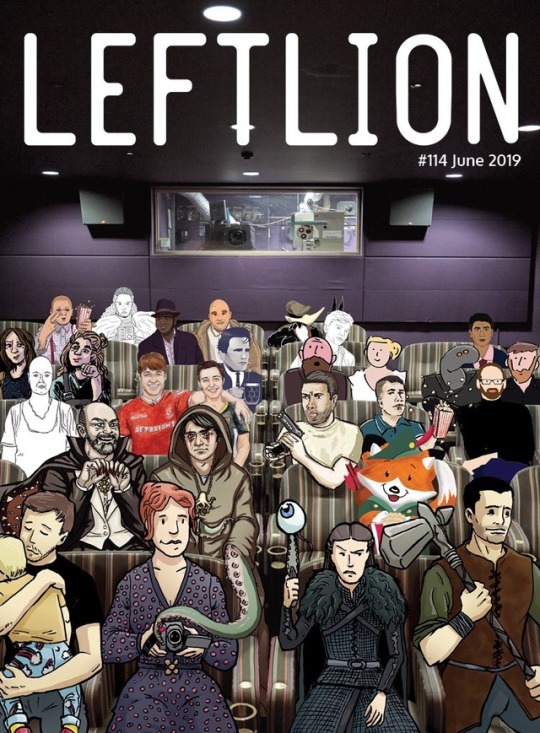
Chuffed to be included in this excellent illustrated cover for this month’s Leftlion Culture Magazine, with a film special! Director Dave Lilley, producer Kel Webster and myself had an interview about our zany short film Socks And Robbers which is currently being submitted to festivals. We feature alongside Vicky Mcclure, Shane Meadows, Bella Ramsey and other Nottingham filmmakers. Great stuff.
1 note
·
View note
Photo
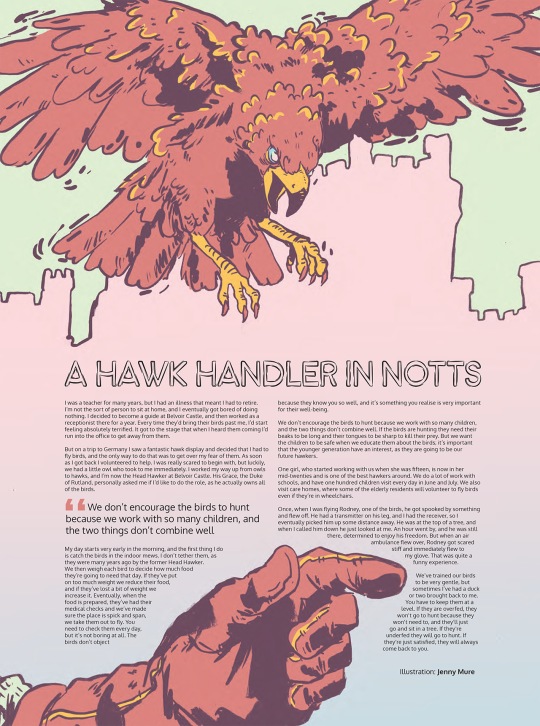
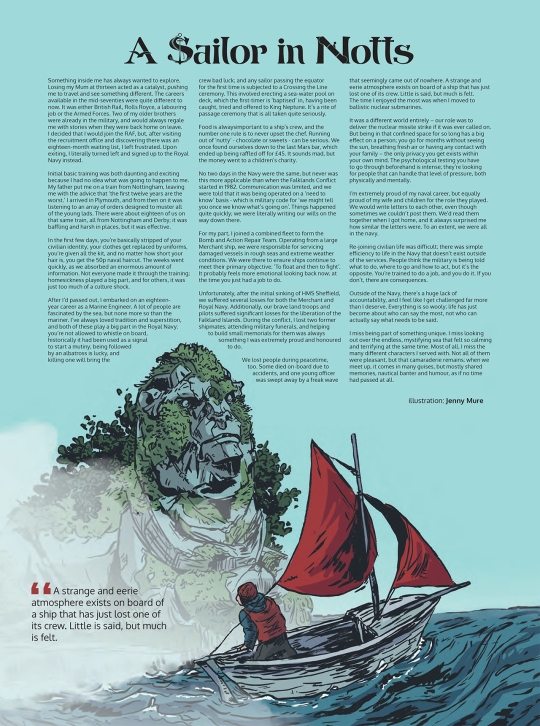
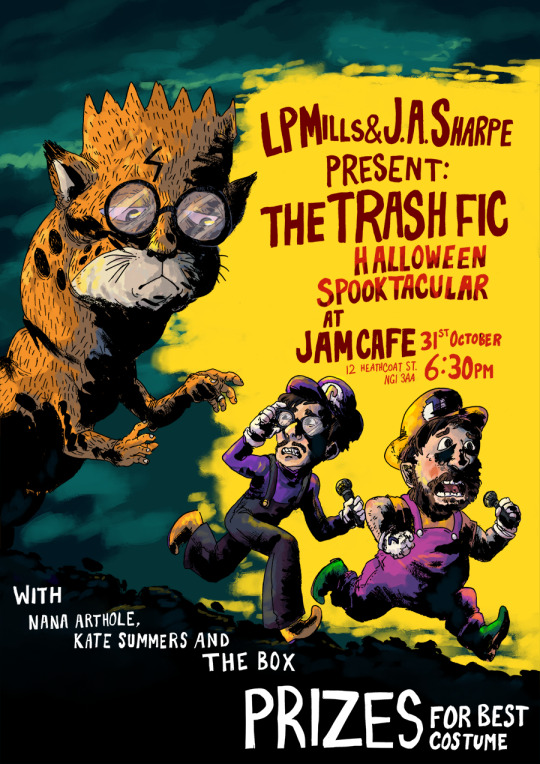
December-January pay period is a reaaaal rough one so just a reminder? Message? I guess that I also do poster and editorial commissions as well as my regular character illustrations.
Drop me a line if that’s something you’re interested in and we can work something out.
#poster#editorial#illustration#text setting in the editorials not by me!#these are from my monthly leftlion gig#they're a good bunch
7 notes
·
View notes
Text
A Social Solution to Supermarket Shopping
I watched in horror as I saw bread, cakes and pastries being strewn into bin bags at around 6pm on a Wednesday at my local Co-Op. The shop doesn’t even close until 10pm. This was all happening whilst a homeless man was stood outside about 10 feet away from the bakery counter. Why is it that in Britain we have such a problem with food going past its “best before” date? If I grew vegetables in my own garden/allotment or baked my own bread I wouldn’t be printing labels that predict the future on how long until it’s ‘gone off’. According to the Waste and Resources Action Programme (WRAP, 2020) UK households currently chuck out around 4.5million tonnes of completely edible food each year. This is food that could be consumed by the individual who bought it or could be redistributed to someone in need.
In reaction to the disappointing amounts of food waste, food surplus shops have started popping up in communities, offering a platform where food past it’s sell by date can continue to be sold. The shops are usually run by volunteers and the food is supplied by the local shops and supermarkets and made available to anyone at lower cost from one of these surplus stores. Food Print, a surplus food store located in Nottingham, exclaimed, “Food waste shouldn’t coexist with people struggling to afford nutritious food. We tackle this imbalance directly, redirecting food that is perfectly fit for consumption but would otherwise go to waste.” (Food Print, N.d.). This use of participatory design involves the supermarkets, the volunteers/citizens managing the re-distribution and the consumer. The method of re-distribution is therefore redesigned in a way to benefit both the environment (by reducing supermarket waste); and the people - by allowing people to buy food at a massively reduced price so it becomes affordable for more classes of people, especially the lower class.
I had a conversation with a friend the other day who said they would feel bad using this service because they “didn’t want to take food away from people who can’t afford it, and by using this service it would feel unethical to them”, however I explained that this isn’t the case since that food would be thrown out anyway. I don’t think it’s unethical for someone who can afford food at full price to buy from these shops as the main issue here is food waste, the fact that this could enable someone who has a lower income to buy food at a more affordable price is a bi-product of the system.
This idea also links to the theory of conceptual design. Surplus food stores solve the problem by changing the system, not the object itself. The sell by dates on food still exist however this is a way round the issue and there is a strong sense of community in the redesign of this.
Surplus stores highlight how we can benefit from both participatory and conceptual design methods. By involving all stakeholders, we are able to get a more realistic view on what the issues are enabling us to resolve them more constructively, and by redesigning systems instead of focussing on the product itself it’s easier to make change than waiting for the higher powers to make these changes and decisions.
References:
Foodprint - Social supermarket & food redistribution network, n.d. https://www.foodprint.io/ (accessed 27 January 2021).
Food-surplus-and-waste-in-the-UK-key-facts-Jan-2020.pdf, n.d.
Social Supermarket Foodprint Won’t Let the Pandemic Stop Them from Tackling Food Waste and Serving the Community, n.d. LeftLion. https://www.leftlion.co.uk/read/2020/june/foodprint-food-waste-pandemic/ (accessed 28 January 2021).
1 note
·
View note
Text
'Oppenheimer is the latest in the recent trend in Hollywood for biopics, but it goes well beyond following this memetic formula in its telling of this very powerful and important story of the life and times of J. Robert Oppenheimer. Oppenheimer was a theoretical physicist and is often dubbed the “father of the atomic bomb” and the film traces a swift overview of Oppenheimer’s life, keeping a strong focus on the invention of the bomb itself and the resulting aftermath. Many biopics that come out these days are somewhat unfocused attempts to compress an entire life story into a film with seemingly little point in doing so, apart from the sheer enjoyment of indulging in an entertaining life story, but with this film, director Christopher Nolan keeps a precise focus to the story and the movie plays with an intense dramatic drive that keeps you on the edge of your seat.
The intensity is a result of the time period in which it is set. Most of the film plays out in the wartime years of the 1940s, in the race to beat the axis powers in coming up with an atomic weapon. This would suggest that the film is a war movie, but it is the tension between war and scientific advancement that gives the movie its true tension. Cillian Murphy’s Oppenheimer is a man captivated by the boundless possibilities of science and the movie follows his story, delving into his work in science and his ties with the war and the wider politics of the time.
The movie is a visual delight. Christopher Nolan prefers shooting his films on IMAX 70mm film, rather than the more typical digital shooting of nowadays; despite this seemingly anachronistic choice, the picture has a depth of detail that is stunning. The choice of colour in the film is very interesting too, with many scenes shot in black and white that really adds to the mid 20th century setting. Nolan has claimed that minimal, if any, CGI was used in the making of the film which makes the technical feats accomplished all the more impressive. Being able to marvel and wonder at large scale practical effects feels like the magic of cinema somewhat returning.
There were many ways in which Nolan could have approached the subject of the atomic bomb in this film, and he presents the story in an intriguingly neutral fashion through most of the film, allowing the audience to draw their own conclusions about events. He presents the scientists as eccentric boffins that are far more interested in their science than any policy or wartime implications of it. This builds a tension in the film, with the scientists far more interested in exploring possibilities and theories, while the politicians and military generals want certainties and policies from them.
Oppenheimer is one of the most curious figures out of this crowd of eccentrics. While he is in part a somewhat dry, mathematical scientific figure, he is also a man with intense political and philosophical views of his own. He is a leading man in his field and as a result is chosen out to lead the Manhattan Project. There is a demand from the politicians and military leaders that Oppenheimer both be a quasi-politician in thinking through the implications of the scientific project he leads, as well as being just a scientist. This seems to be the source of the tension in the film and Oppenheimer is torn between his own political views and attempting to be just a scientist. The people around him demand he give up his own personal political views while also not just being a scientist. We see the whole universe unfolding in Oppenheimer’s far-seeing ice-chip eyes and haunted, hollow face as the movie advances.
A recurring theme in Christopher Nolan’s films is his use of time. With some films he takes this to surreal extremes and the subject of time is very apparent, but in this film it is used in a far more subtle way. As an audience, everyone knows that at some point the bomb is going to go off and then the consequences of it will unfurl, so the entire film feels like the countdown to the bomb going off. In this way, the film has two parts, the build-up and then the aftermath. Much like the radiation and its consequences, the effects of Oppenheimer’s creation haunt him for the rest of the film.
As a period film, it has a strong sense of the oppressive, bleak wartime feel, shown with stern looking people in cigarette smoke filled offices in black and white scenes discussing administration and security procedures. This is contrasted with the highly colourful and expansive scenes where science is involved, with shots of atoms and particle waves flying through the air and stars exploding. This is the fascinating juxtaposition in the film, where the technology being developed at the time seems to totally transcend the constraints of the time period, and in this way, Nolan also appears to play with time.
The second half of the film is Oppenheimer being subjected to humiliating security clearance hearings that picks over every aspect of his life. The hearings ask Oppenheimer the questions that we as an audience may ask him – is he personally ultimately responsible for unleashing onto the world a weapon that could destroy the world, if so, why did he allow that to happen… or was he unthinking and simply acting as a scientist wanting to do his job and help the government in its war efforts as best he could? Oppenheimer appears to be a man of contradictions who both wanted to play politics and take a moralistic standpoint on the question of atomic weapons, while also wanting to be just do science and have politicians and generals deal with the implications of the scientific developments. This is a hanging question that sees Oppenheimer blackmailed and scapegoated in a fascinating story of morality and science in wartime.
The film leaves the audience with little reassurance in its conclusion; after all, we all still live with the consequences of Oppenheimer’s creation. The film is an open question to us all about how we should live with weapons of mass destruction. Nolan’s films frequently require a couple of viewings to unravel fully, and while it lacks the baffle-factor of Tenet, Oppenheimer is no exception and is well worth a watch.'
0 notes
Text
Film Review: The Half Of It — Leftlion
Film Review: The Half Of It — Leftlion
Read more at Leftlion
— by Roshan Chandy: The trend for transporting literary classics to a high school setting has been around ever since Clueless (1995) swapped “Austintatious” Highbury for hip-hoppin’ Hollywood and Emma Woodhouse for Cher Horowitz. Meanwhile, 10 Things I Hate About You(1999) added student hormones to the recipe for Shakespearean tragicomedy and the themes of social…
View On WordPress
0 notes
Photo

A place in the sun #instapic #instamood #instapicture #woman #mother #babystroller #cradle #stroller #nottingham #nottinghamlife #nottslife #notts #oldmarketsquare #leftlion (at Old Market Square)
#instapicture#oldmarketsquare#nottslife#mother#babystroller#nottinghamlife#instamood#woman#instapic#notts#stroller#leftlion#cradle#nottingham
0 notes
Photo

Big up Nottingham
#graphic design#designer#nottingham#nottslife#independent#hire me#lion#leftlion#vector#art#tshirt#cool
0 notes